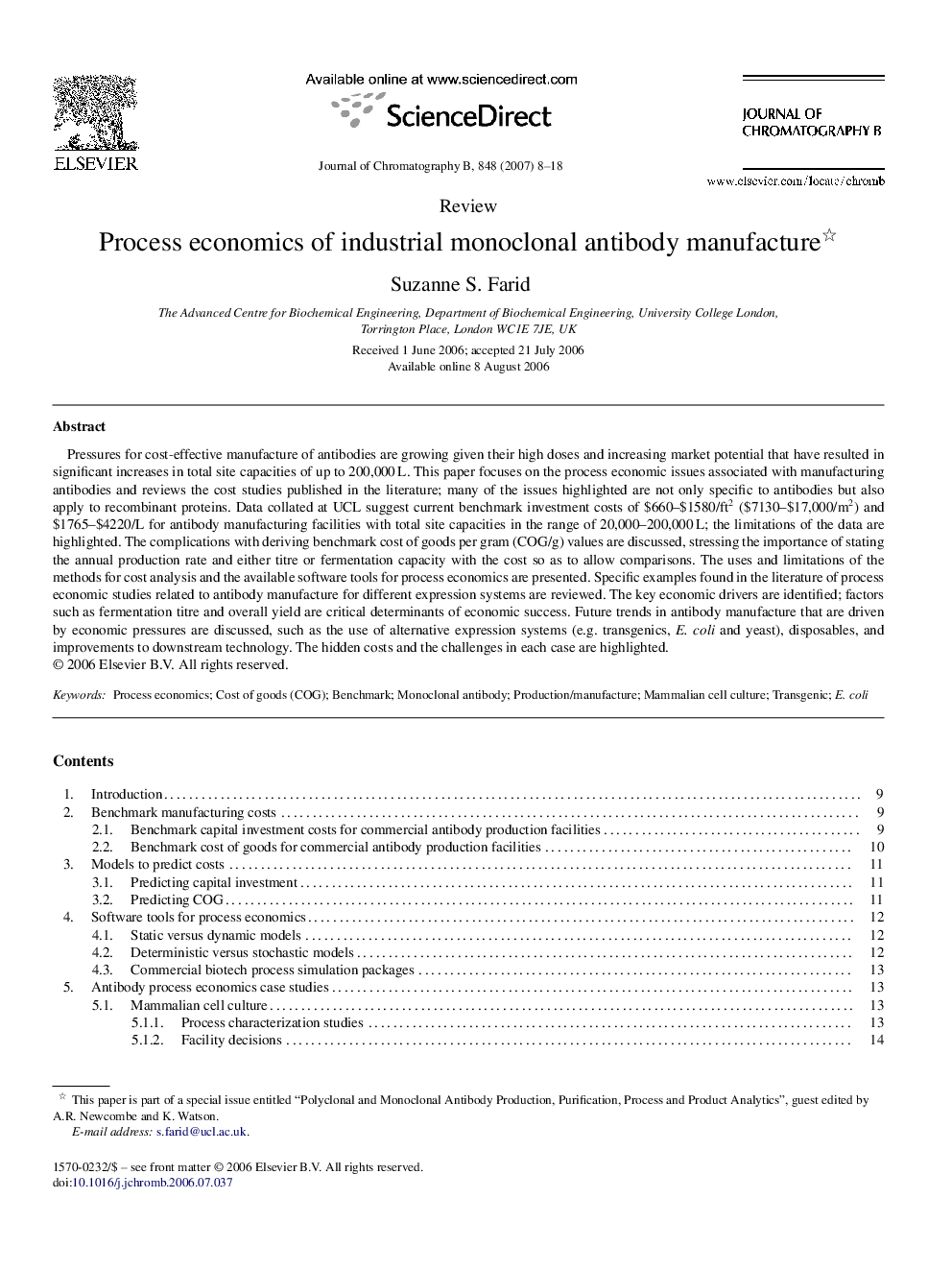| Article ID | Journal | Published Year | Pages | File Type |
|---|---|---|---|---|
| 1215933 | Journal of Chromatography B | 2007 | 11 Pages |
Pressures for cost-effective manufacture of antibodies are growing given their high doses and increasing market potential that have resulted in significant increases in total site capacities of up to 200,000 L. This paper focuses on the process economic issues associated with manufacturing antibodies and reviews the cost studies published in the literature; many of the issues highlighted are not only specific to antibodies but also apply to recombinant proteins. Data collated at UCL suggest current benchmark investment costs of $660–$1580/ft2 ($7130–$17,000/m2) and $1765–$4220/L for antibody manufacturing facilities with total site capacities in the range of 20,000–200,000 L; the limitations of the data are highlighted. The complications with deriving benchmark cost of goods per gram (COG/g) values are discussed, stressing the importance of stating the annual production rate and either titre or fermentation capacity with the cost so as to allow comparisons. The uses and limitations of the methods for cost analysis and the available software tools for process economics are presented. Specific examples found in the literature of process economic studies related to antibody manufacture for different expression systems are reviewed. The key economic drivers are identified; factors such as fermentation titre and overall yield are critical determinants of economic success. Future trends in antibody manufacture that are driven by economic pressures are discussed, such as the use of alternative expression systems (e.g. transgenics, E. coli and yeast), disposables, and improvements to downstream technology. The hidden costs and the challenges in each case are highlighted.
